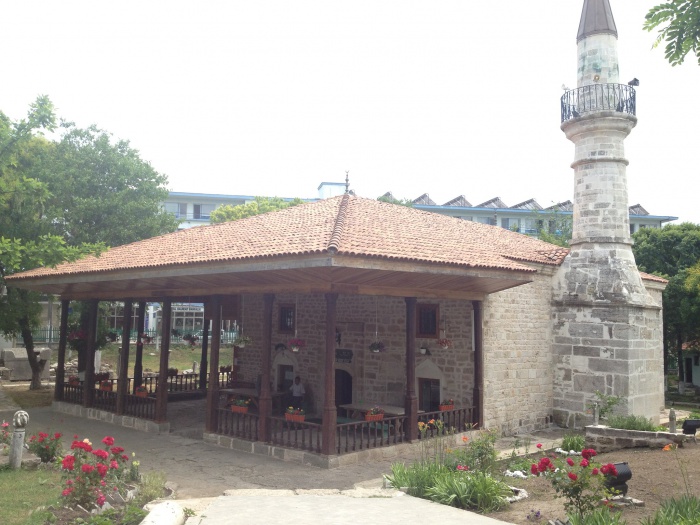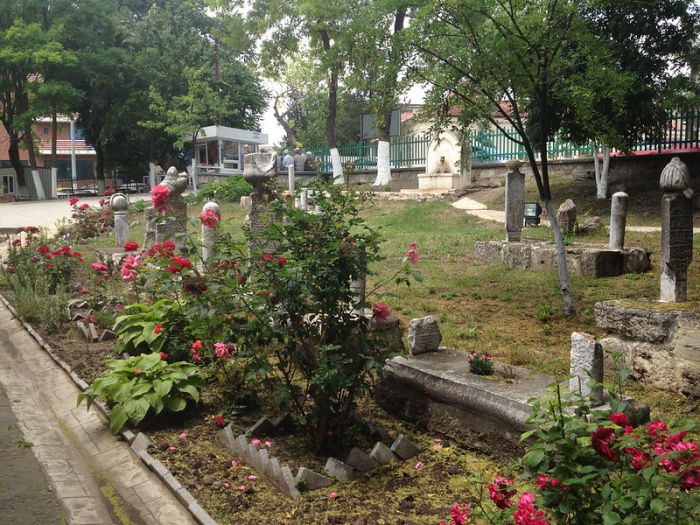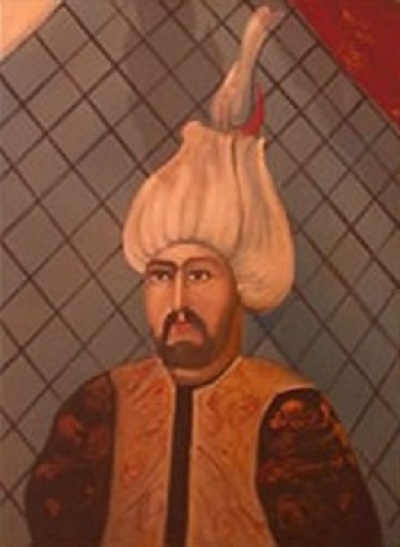“Go to Mangalia, which is the Mecca of the wandering poor people!” Anything can be expected, but not the comparison of so beautiful and majestic little Esmahan Sultan Mosque in Mangalia, in South-East Romania, to the holiest for Muslims place…

“The Esmahan Sultan Mosque was built in 1573 in memory of Solyman II, one of the greatest rulers of the Ottoman Empire of that time” the inscription near the house of the Almighty says. This is clearly not the official sign for tourists, as the date was written in blue over the original phrase. Besides, Suleiman II (that is how his name is spelled correctly) came to the throne only in 1643 – a whole 70 years after the mosque had been built. But all these inconsistencies and mysteries just further increase the desire to get acquainted with the hard but still living history of Islam in Romania.

In the mosque’s garden, hidden among overgrown foliage, about a dozen of thin tombstones stood in varying stages of decay, but still topped by stone Ottoman headdresses of differing rank. Many had wonderful Arabic and Persian engravings. Some, ravaged by time, had fallen away and been neatly piled by the mosque doorway.
The restoration work was apparently the private undertaking of a wealthy businessman from Turkey called Seyyid Ismail Hakki Bey. It was Seyyid who had authorized the following sign: “During the XVI century, the princess Esma, daughter of Selim II and wife of the High Vizier Sokollu-Mehmet-Pasha, took refuge in Mangalia”.

Sokollu was the most powerful vizier in the history of the Ottoman Empire. His career began under Suleiman the Magnificent, when the empire was at its height. Sokollu’s history and reign as the Grand Vizier makes for one of the empire’s most intriguing chapters. Our today’s hero was born to a Christian Serb shepherd in the tiny village of Sokolovici in modern day Bosnia. At the age of ten Sokollu was taken from his family to the Ottoman palace, where he was trained as a Janissery soldier.
Converted to Islam, over the next 50 years, Sokollu had been rising steadily through the military ranks right before the moment Sultan Suleiman appointed him Grand Vizier in 1565, making him the second most powerful person on the planet.
A year later, the Sultan died during a military campaign with Sokollu by his side. The Grand Vizier immediately took hold of the empire’s reins to oversee the smooth ascension of Suleiman’s son Selim II to the imperial throne.
Selim was very different to his father. Softened by palace life, he had no interest in ruling the world or taking part in military campaigns. The heir to the empire preferred to stay in the palace. In addition to it, having seen the trust his father had placed in the Grand Vizier, Selim II saw no reason to stop the elderly statesman continuing to make the key decisions, which influenced the empire’s fate. Thus began a 13-year period during which most historians believe it was Sokollu that ran the Ottoman Empire.
The Christian boy from Bosnia had grown up to rule the Muslim world…Not everyone liked this arrangement, least of all the Ottoman Sultanas, whose power was on the rise towards the end of this period, especially after Selim II was succeeded by his son Murad III, a handoveagain overseen by Sokollu, the Grand Vizier.
Some researchers believe that it was the disgruntled and power-hungry sultans who were behind the murder of Sokollu four years later at the hands of a “mad” dervish in October 1579. What is certain is his death signaled the dawn of the period known as “the Sultanate of Women”, when Ottoman power was firmly in the hands of the imperial women, namely the mothers of the Sultans.
There is no Kaaba or Mecca in Mangalia, there is not even a stunning monument of Islamic culture. There is just a whitewashed old mosque with a terracotta roof that has the most fabulous story to tell...
Ilmira Gafiyatullina
Фото: Creative Commons
